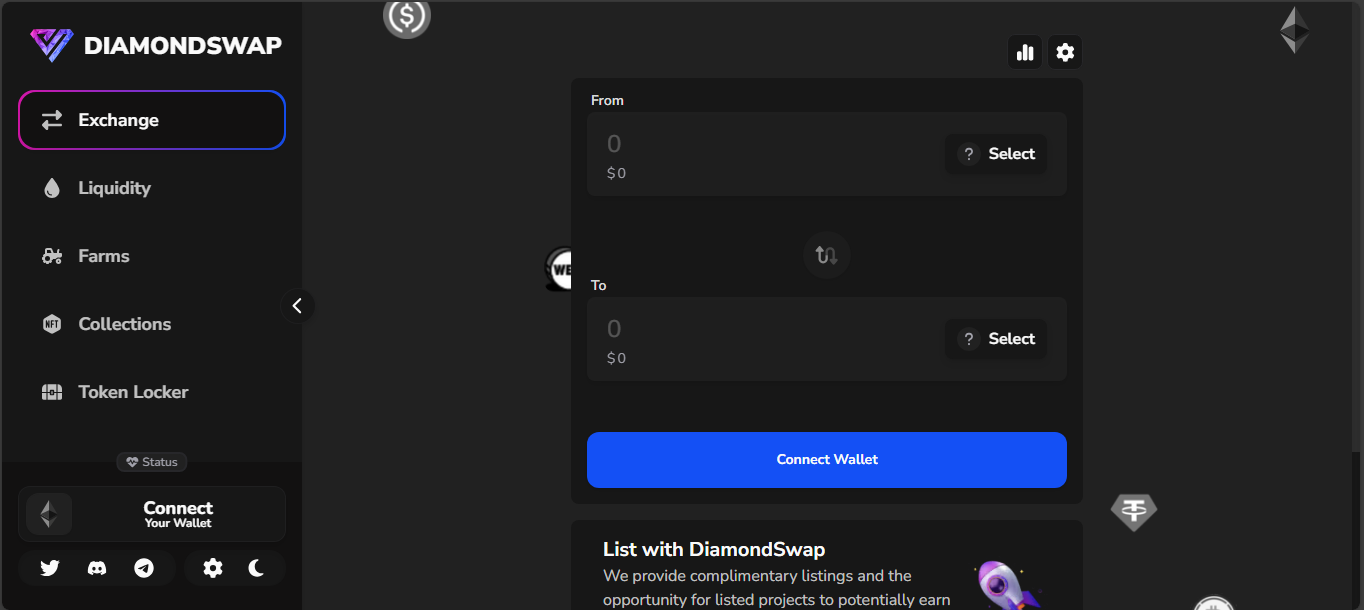ICO Rankings Blog
Discover a wealth of knowledge and stay up-to-date with the latest trends, news, and insights in the cryptocurrency and blockchain space through our blog.
Discover a wealth of knowledge and stay up-to-date with the latest trends, news, and insights in the cryptocurrency and blockchain space through our blog.
Alium Swap launched as a multi-chain DEX supporting Polygon, BNB Chain, Fantom, Ethereum, Metis, Aurora, Moonriver and more. It offers hybrid liquidity, cross-chain swaps, staking pools and an NFT-enhanced GameFi mechanic. On paper, it looks like cross-chain ambition meets DeFi fun.
The ALM token has a max supply around 250 million with about 220 million circulating. Price hovers near $0.0018 with tiny daily volume under $100. That suggests minimal trading and liquidity. The token serves utility and governance roles in the Alium ecosystem - staking, voting, fees, and more via Strong Holders Pools.
Volume is negligible - often under $100 per day. Liquidity pools exist, but TVL is low. Trading activity is sparse. Hybrid liquidity helps price impact, but only if pools are funded. Most swaps fail or cost too much slippage. There’s function, but no flow.
Users connect a wallet like MetaMask, pick a chain, and swap or stake. No account, no KYC. It’s lean DeFi: clean UI, simple wallet flows, staking and farming. But depth is missing. Pools empty. Swaps grind or fail. APRs seem attractive until yield chasing crashes into thin liquidity.
Alium operates in DeFi grey zone. No formal structure, no licensing. ALM holders govern via DAO mechanics but turnout is inconsistent. Smart contract risk is real - bugs are permanent, upgrades limited. Legal status across chains is unclear. Owners may de-anonymous.
ALM trades near $0.0018 - down about 99 % from its ATH of around $0.40. Forecasts vary - some models target slight rises to $0.005 or $0.01, but with no liquidity or volume these are speculative. Only major TVL inflows or new incentive schemes might change that.
Alium Swap looks ambitious - it has chains, features, staking, NFTs and a hybrid liquidity model. But active usage is almost nonexistent. Trading volume is minimal. Pools lack depth. Governance feels cosmetic. If no one trades, hybrid liquidity stays theoretical.
It’s more a DeFi experiment than a working exchange. Conceptually rich, execution weak. If you explore ALM, expect a niche sandbox. Upside exists only if activity follows. Until then, it’s a low-traffic testbed with big ideas and tiny users.
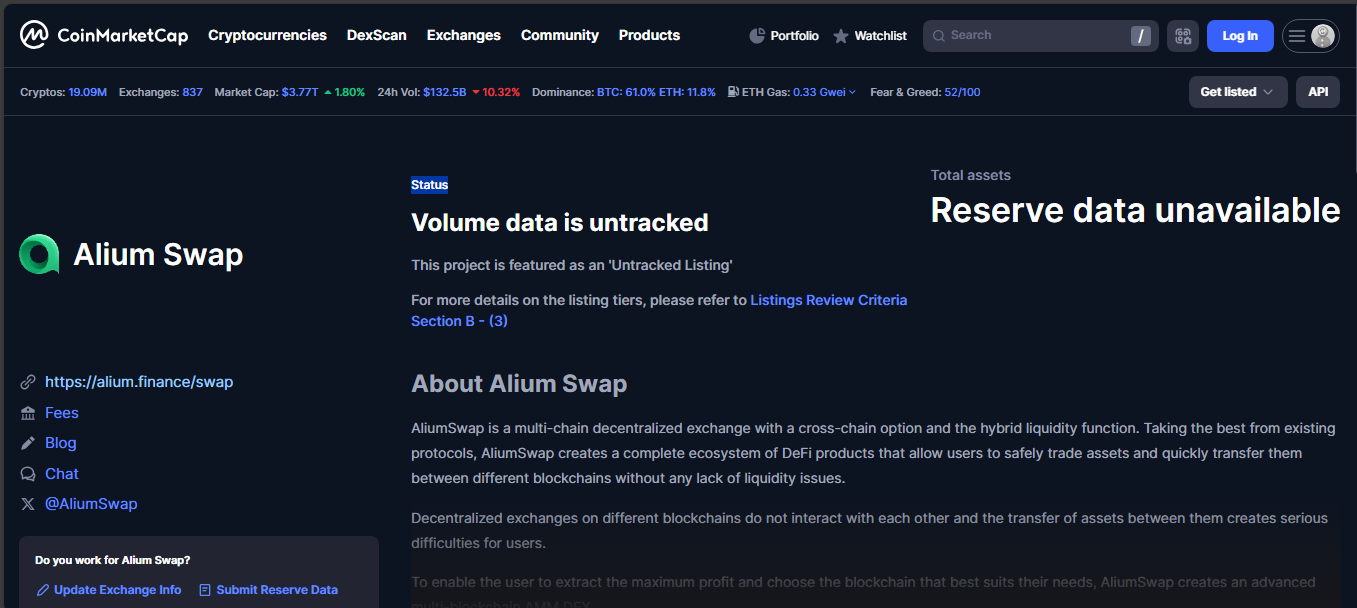
SmarDex showed up in 2023 with a loud message: “We fixed AMMs.” The idea was simple - instead of classic pool math, they built an algorithm that adjusts liquidity ratios in real time. Supposedly, that cuts impermanent loss. Maybe even reverses it.
They called it smarter DeFi. Built for EVM chains. Ethereum, BNB, Arbitrum, Polygon - all there. A few researchers from Switzerland were behind it. They published papers. They did testing. They launched a token.
The token is SDEX. Circulating supply - over 9 billion. Max supply - 10 billion. Price floats around 0.0045 dollars. Fully diluted market cap - just under 50 million. On paper, that’s solid. In practice? Depends where you look.
Most of the volume is off-chain - Gate, MEXC, CEX trades. On the SmarDex protocol itself, volume is tiny. Less than 20K per day on-chain. Pools exist, but they’re shallow. You click, you swap - but the order might not fill. Or you’ll eat slippage.
SmarDex pushes one core feature: less impermanent loss. Maybe even profit for liquidity providers. That’s the hook. And yes, they’ve built it - dynamic pool math, fee sharing, staking, bug bounty programs. Technically, it’s all there.
But the users aren’t. On-chain trading is low. Swap counts are low. Staking exists but doesn’t pull capital. Governance? Barely visible. There’s a DAO structure, but no real participation. The code may be smart - the crowd is missing.
Let’s talk risks. Smart contracts are immutable - if something breaks, it stays broken. That’s what happened in other DeFi projects. SmarDex runs bug bounties, sure. But the legal side is murky. No licenses. No structure. Just code and promises.
They don’t rug. But they don’t scale either.
SmarDex feels like a lab experiment. Bright minds, clean math, clever pitch. But no traction. It runs, it works, but no one’s using it. The volume’s on centralized exchanges. The on-chain version? Quiet.
They solved impermanent loss. Great. Now they need to solve user loss.
Until that happens, SmarDex stays in the category of “interesting, but not quite there.” If you’re curious, try it. But don’t expect action. Not yet.
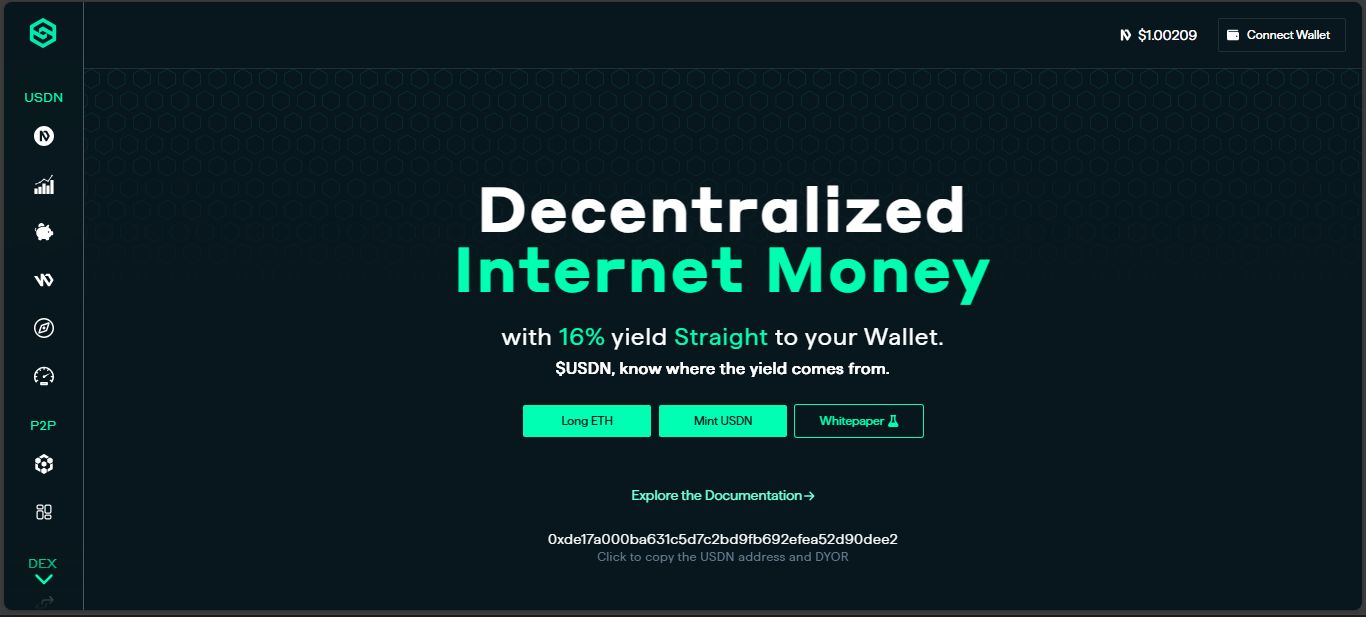
built-in swap service with no token rewards, no fees for LPs, all running without maintenance. The protocol is permanent and unupgradeable by design - just code on chain.
It’s clean in philosophy. Swap, lend, stake - all core DeFi primitives built into L1. But there’s no front-end UI or incentive structure. Everything is public, simple, minimal.CantoSwap is a native DEX on Canto, the free-public-infrastructure blockchain. The idea: a
On DEX ranking lists, CantoSwap volume is essentially zero. Daily trading share sits at 0.0 percent across blockchains. TVL on the protocol is just about 1,254 dollars - literally the size of a small trade. No real liquidity. No flow.
The network runs with token CANTO. It’s used for staking, governance, and lending rewards. But CantoSwap itself uses no separate token. Liquidity mining is token-agnostic, handled via CANTO incentives.
To use the DEX, you bridge assets to Canto then interact via aggregators like Slingshot or other interfaces. There’s no official GUI, no dashboard. It’s DeFi raw - trust your wallet, call smart contracts. No accounts. No sign-ups.
That ethos is noble until you need liquidity. Many wallets load, but swaps fail or revert. Pools are empty, slippage is high, gas is Canto-mainnet expensive on complex paths.
Canto’s model is governance-light. Their DEX can’t be upgraded, administrators lack tools to intervene. That’s intentional. Fix or patch? Not possible. If a bug hits, it stays. Governance proposals can slow emission but not fix contracts.
Inflation from CANTO mining is real. Nearly half of token emissions go to liquidity providers on ecosystem protocols. Much goes to public goods. That may weaken token value over time.
CantoSwap is ideology-first. It’s built to be a piece of public infrastructure, running forever on-chain. But infrastructure without users is just code. With no interface, no rewards, and no liquidity, it feels more like DeFi rote than RealFi.
If you like minimalism and believe in community-first design, explore it. If you expect volume, pools, or usability - move on. CantoSwap is an interesting corner of crypto theory, not an accessible trading venue.
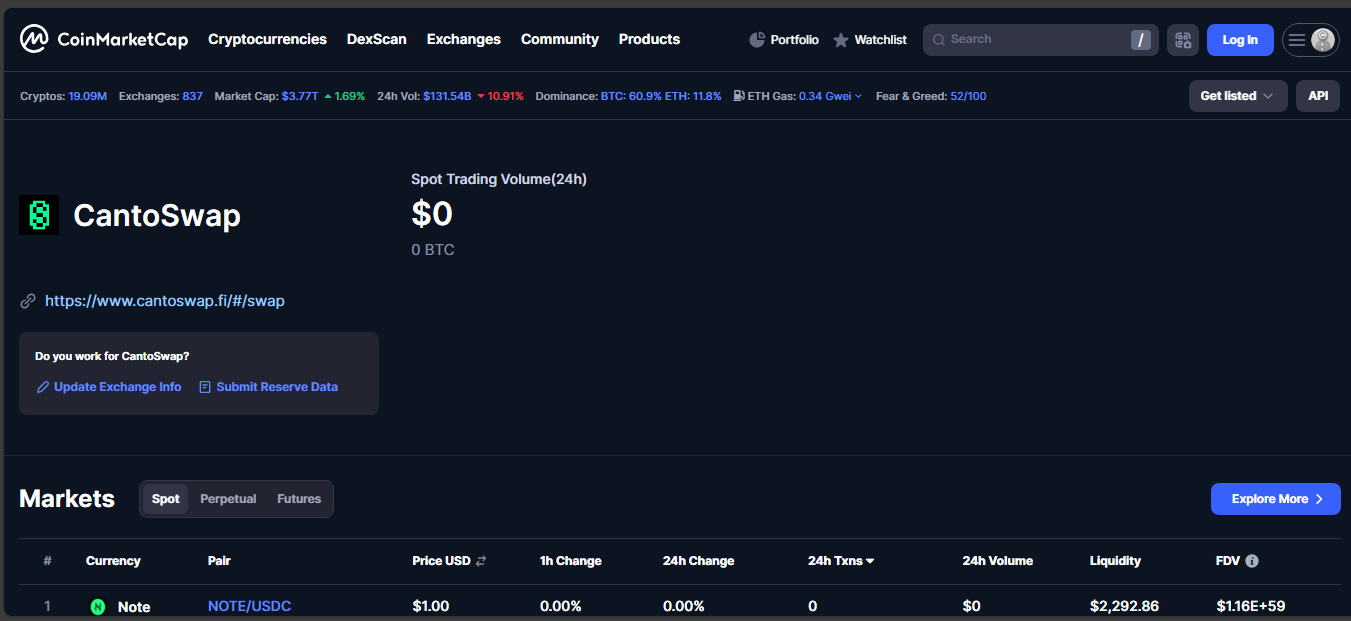
Algofi launched in 2021 as a one-stop DeFi suite on Algorand. It combines lending, stablecoin minting, governance and a decentralized exchange. On paper it loaded fast, with low fees and Algorand scalability. Yet real usage - especially in swapping - is minimal.
The core protocol features loans, an AMM and STBL stablecoin. Governance runs via BANK token airdrops and a DAO structure. A vault integrates Algorand on-chain voting with DeFi capital.
TVL on the platform sits around 1.2 million dollars. Swap volume on the Algofi DEX is effectively zero over 24 hours - or even measured periods. Cumulative DEX volume across the protocol is negligible.
You connect a wallet - like Pera or MyAlgo - and you can lend, borrow, swap, even mint STBL. No signup. Accountless DeFi. But without liquidity, swaps don’t fill, rates stay flat, and farming yields stay low. No buzz. No liquidity depth.
Algofi raised a few million in seed funding. Trading on Tinyman and other Algorand DEXs delivers more action than Algofi’s own exchange. Its swap feature is overshadowed by programs like Tinyman or Pact.
BANK token currently lacks liquidity and market cap is small - well below mainstream levels. Most of the platform’s activity centers around lending and governance, not swapping.
Pressure on Algorand’s token supply and emissions could weaken economics. Governance turnout is mixed. As with all smart contract systems, bugs are immutable. Legal structure is vague, with no formal licensing across jurisdictions.
Algofi is more infrastructure than active venue. Its value sits in lending and governance on Algorand - swapping functionality remains underdeveloped. The DEX part is real, but no one uses it.
If you seek a live swap platform, Algofi is not it. For governance or lending aligned with Algorand, it has some potential. But don’t expect on-chain volume or deep market flow yet.
Until liquidity picks up, withdrawals move freely and governance engages, Algofi’s DEX is a concept waiting for users - not a functioning exchange.

SkullSwap launched with a big claim: deep liquidity, low fees, faster trades on Fantom. It uses Algebra’s concentrated liquidity tech, like a Fine/Wider QuickSwap V3 clone. The pitch: smarter DeFi with better pricing.
It is part of the broader Skull Order ecosystem that also includes staking, perpetuals, and insurance layers. The token is SKULL. Users stake SKULL into “Bag o’ Bones” to earn dSKULL and protocol fees. They can stake dSKULL further for partner rewards. The structure is clever on paper.
TVL on SkullSwap is microscopic - about 250 USD worth locked. Daily swap volume clocks in at just a few cents. On-chain trades are nearly non-existent. Swaps show in TVL dashboards, but depth is zero. Order execution is hit or miss. Slippage is high if you try.
Off-chain, SKULL trades may happen via CEX or partner platforms, but on-chain liquidity remains absent. Pools exist, but users don’t join them. Interface loads, buttons show, but nothing fills.
You connect a Fantom wallet, pick a pool, stake or swap. No sign-up, no KYC. But once connected, you discover: depth is lacking, swaps revert, slippage bites. Farming looks active, but TVL is tiny. Governance exists but feels cosmetic - DAO votes rarely pass.
It feels like a demo more than production. Staking dashboards update, but yield is minimal. Swap menus aren’t used. The crowd just isn’t there.
The design is academic: concentrated liquidity, adaptive fees, farming, staking tiers. But execution failed. Users didn’t come. Pools are empty. TVL is below one Starbucks coffee.
SkullSwap didn’t rug. It just never scaled. Bug bounties exist, but liquidity risk is real. Legal status is fuzzy. Governance is DAO-style, but barely active. There’s no formal oversight or licensing.
SkullSwap reads like a textbook project. Engineers built it with ambition - concentrated pools, farming, multi-tier staking. But they forgot one thing: users. The on-chain DEX is empty. The mechanics are clever, but implementation stayed silent.
If you’re chasing innovation or curious about new AMM designs, peer inside. But if you need market flow and active depth, this isn't it. SkullSwap is interesting theory without users yet.
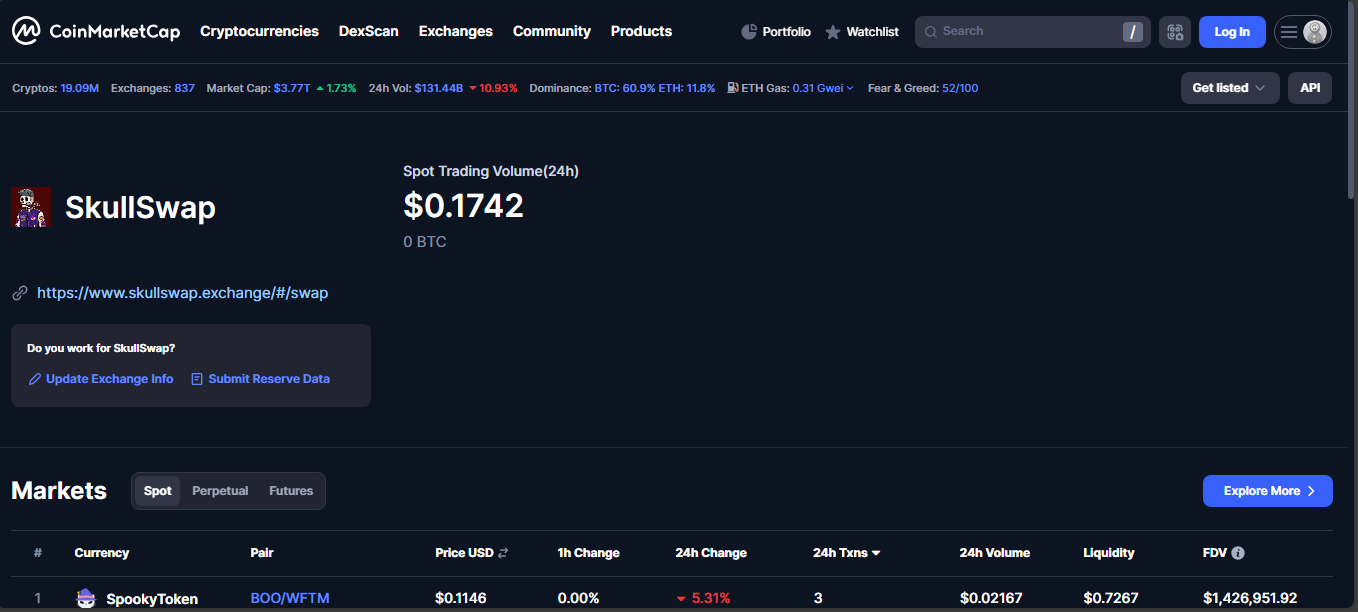
CroSwap launched around 2022 with the promise of user-friendly DeFi trading on Cronos. It charges a flat 0.2 % trading fee and rewards liquidity via its CROS token. Built using the Diamond Standard, it offers modular extensibility without requiring contract migration.
CroSwap is backed by HLWGroup, with engineering teams spread globally and a focus on minimal gas costs and upgrade flexibility.
The token CROS is used to incentivize liquidity provision, access ecosystem features, and reduce fees. Current statistics show circulating supply around 26.8 million CROS and zero active trading volume on-chain. Most metrics indicate negligible activity.
Reported 24-hour volume fluctuates around $20–$100, often centered on a single trading pair WCRO/USDC. Depth is shallow; spreads are wide; liquidity is nearly nonexistent.
In practice, CroSwap shows one coin, one active pair, and no real order book depth. Median liquidity depth measured in dollars is minimal. On-chain interaction is rare. Users connect wallets and expect swaps, but trades often fail or execute poorly.
You connect a wallet, pick a pair, and attempt to swap. No sign‑up, no KYC. Interface loads quickly, but the crowd doesn't. Farming is available via CROS staking, but participation is low. The platform feels deployed but unused.
CroSwap’s contracts are upgradable via the Diamond Standard, which offers flexibility—but also adds attack surface. Legal structure is unclear. There’s no formal regulator oversight or licensing. Liquidity provision relies entirely on community incentives, which aren’t strong.
CroSwap is built around solid technical architecture—modular smart contracts, minimal fees, token incentives. But none of that adds up to real use. Liquidity is lacking. On-chain swap flow is effectively dead. It feels like a demo project left unscaled.
CroSwap didn’t scam. It didn’t rug. It just never gained traction. The value is in the CROS token economics, but without users, that value is inactive.
If you’re curious about new modular DEX tech, take a peek. But if you want real market depth or live trading, this isn’t it.
